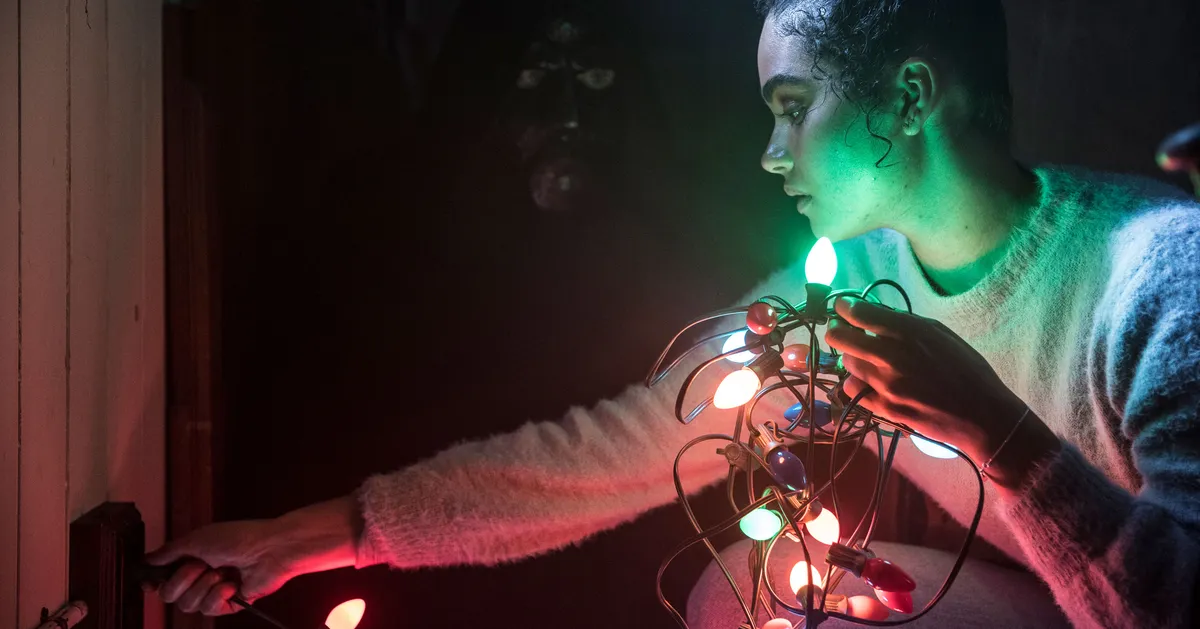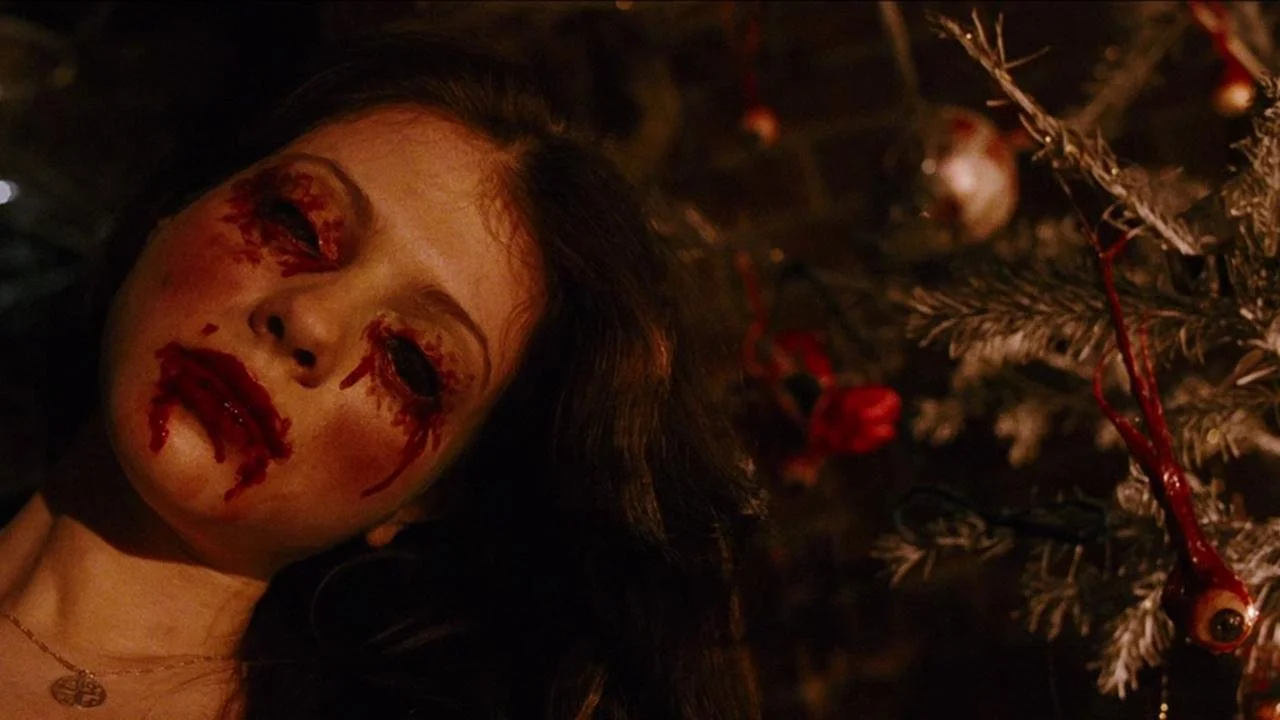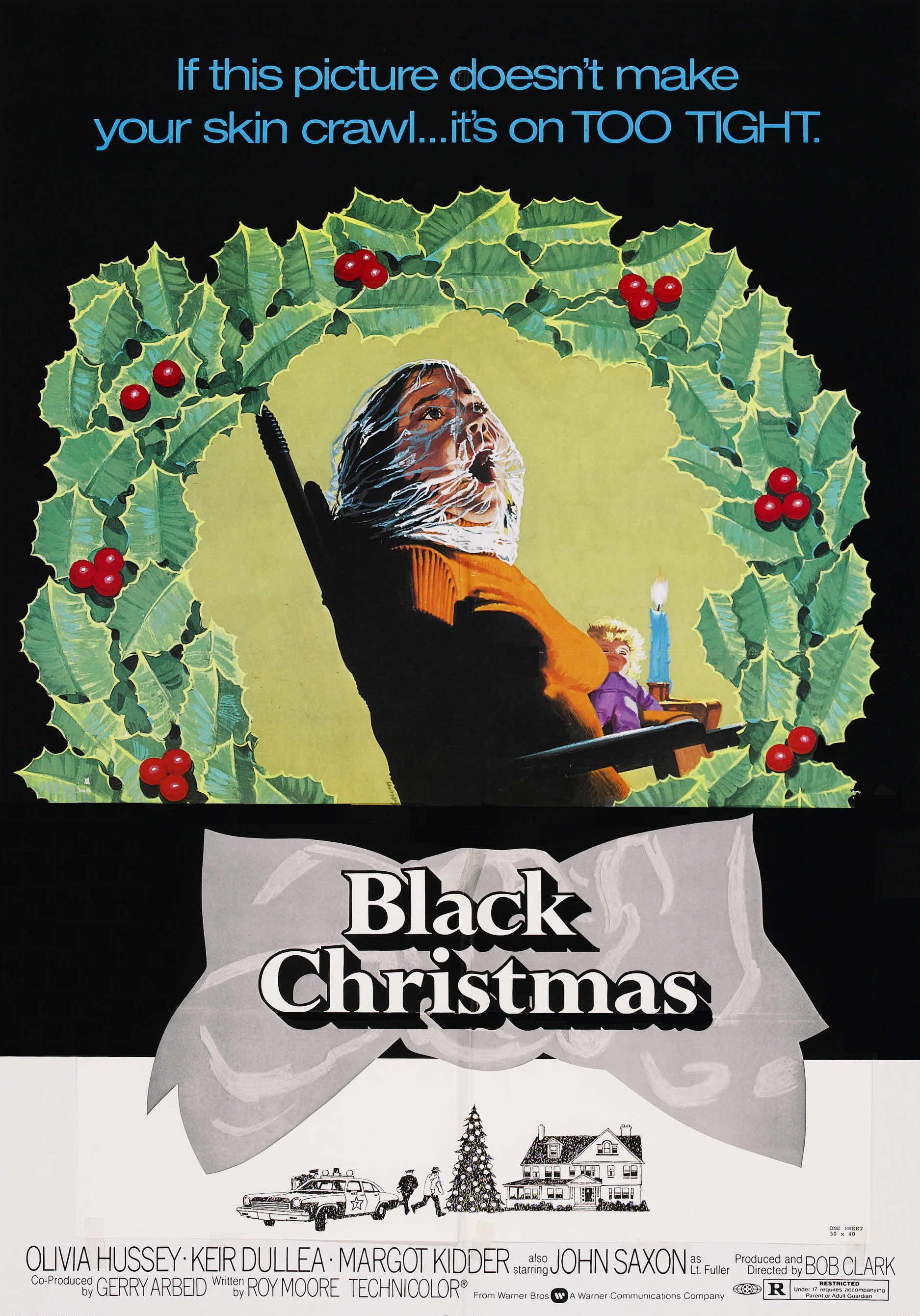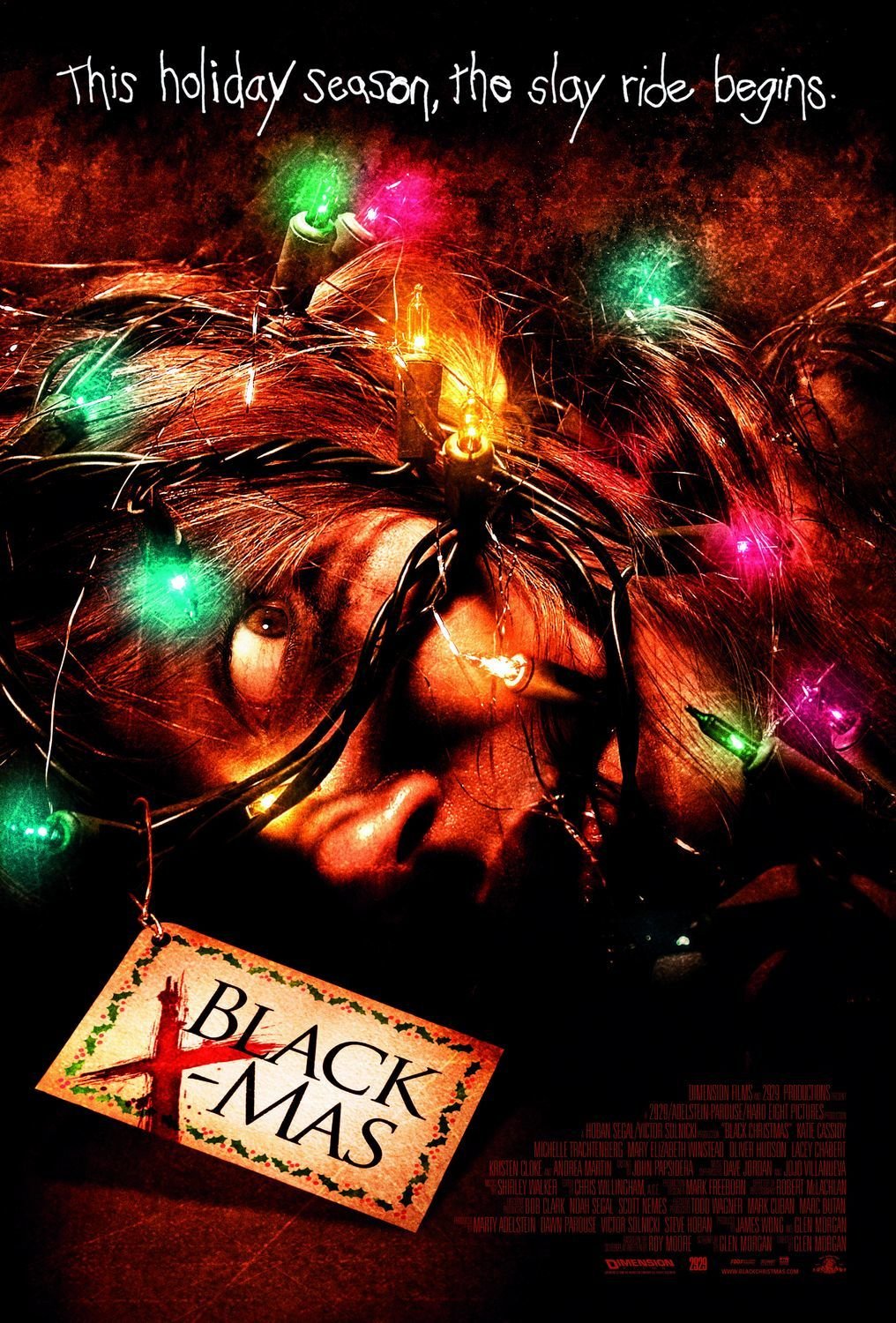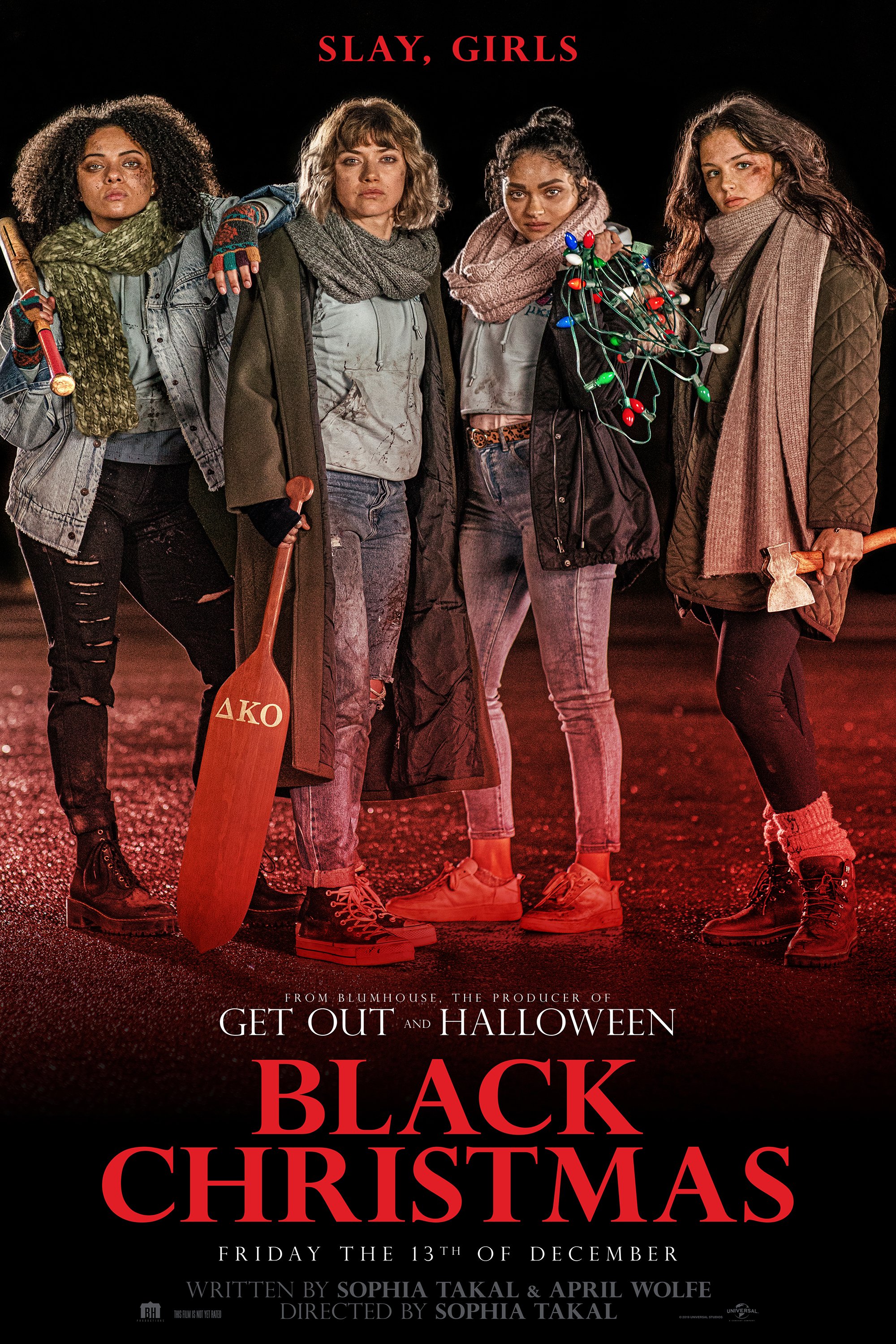LISTMAS—10 Similarities In 3 BLACK CHRISTMASes
Always Bet On Black
Come on everybody, let’s get into the holiday spirit with a song! Sing along if you know the words!
Black Christmas you cut out my heart
Almost 12,000 days you made a remake
Three years, you gave me some tears
I still think you’re something special
Join in y’all! [starts clapping annoyingly]
“Black Christmas you cut out”—wait what? What’s that? I’m being sued by Wham!? And Weird Al too? For what? Oh, for copyright and gimmick infringement. Yeah, that all tracks. Ok, I’ll stop butchering pop hits and get back to the lecture at hand.
Nothing says season greetings like a solstice themed slasher so let’s talk about BLACK CHRISTMAS! The 1974 original film directed by Bob Clark not only revolutionized the horror genre via innovative tropes and techniques, it also spawned two remakes. At a glance, each of these three offerings are very different films but are there qualities that connect these disparate works together? The answer… you bet your mother’s skin cookies there are! So, let’s get into the reason for the season and count down my top ten threads that tie these contrasting Christmas chillers together!
10. Parallel Holiday Horrors
The way I like to contextualize these three BLACK CHRISTMAS films is by comparing them to the first three HALLOWEEN movies. Like the original HALLOWEEN (1978), BLACK CHRISTMAS (1974) is grim and gritty while demonstrating cutting-edge cinematography. Carpenter actually credits the 1974 slasher with influencing his point-of-view camera work as well as the characterization of Michael Myers as silent/shapeless psycho killer. The first remake of BLACK CHRISTMAS (2006) shares the amped up violence and sheer brutality seen from HALLOWEEN II (1981) while BLACK CHRISTMAS (2019) is dramatic departure in form and foe from the first two incarnations not unlike the much maligned and misunderstood HALLOWEEN III: SEASON OF THE WITCH. In both third takes, we witness a striking shift towards the supernatural serving to polarize the fanbase. Also, both film franchises are credited with popularizing the holiday-based horror movie trend that persists to this very day.
9. Deck The Halls
Naturally you can’t have the word “Christmas” in your title without demonstrating at least a modicum of seasonally appropriate decoration. The 1974 edition keeps it simple with home adornments with austere lighting. As a low budget production, the homespun visage adds to the realism while representing a festive air that belies the seething tension bubbling just below the surface. 2006’s version brings all the holiday bells and whistles. That means more snow, more ornaments, and dramatic red and green lighting used to invoke various emotional responses from the audience. We also get Christmas-themed kills aplenty! Viewing the 2019 release, one can’t help but notice our set pieces are a bit lacking in terms of holiday cheer. Aside from the opening sequence and a tree trimming scene, I found the film sparse on Yuletide doodads, possibly due to the extremely short production schedule. BLACK CHRISTMAS (2019) was announced, written, filmed, edited, and released in about six months—which I do believe qualifies as a Christmas miracle.
8. Gimme A Break!
Dana famously quips “The party gods wouldn't allow me to be here alone during Christmas break” in 2006’s rendition. Alone is the operative word there. Setting all three versions during winter break only adds to the isolation inside and out of our respective sorority houses as students en masse return to their hometowns only leaving a precious few in these collegiate ghost towns.
7. It’s A Family Affair
All three films explore family themes albeit in dramatically different ways. In 1974, our protagonist Jess is pressured, even intimidated by her boyfriend Peter into marriage and keeping the pregnancy she is resolute in terminating. Concurrently, the father of our first victim is essential in escalating police involvement. For the 2006 film the family dynamic is very much skewed as we examine the dysfunctional childhood of our assailants, giving a perverse and terrifying glimpse into the origins of killers. With 2019’s movie, we examine chosen families as sorority sisters rise to defend each other in the face of a dark presence.
6. Toxic Masculinity Ruins The Party…Again
Male entitlement rears its ugly head in each of these flicks. The demands Peter makes of Jess only serves to make her fearful of him. That fear feeds into making him a suspect. Kyle from 2006 may be marginally better but he’s got his own problematic behavior. While he claims that the sextape of him and Kelli’s now deceased sorority sister Megan was from before they dated and completely consensual, he does repeatedly refer to the women of this movie as “spoiled bitches” and breaks into the house via Megan’s room which is pretty suspect. It gets so much more terrible with the men of 2019. At their worst, men are literally using a physical manifestation of toxic masculinity to mind control fraternity pledges in order to kill any woman that stands against their regressive ways. At best, they’re useless and mildly annoying.
5. To Desert And Deflect
Speaking of useless and annoying, don’t bother calling the authorities in the BLACK CHRISTMAS cinematic universe. In all three films the police and security tend to be ineffectual and dismissive with the one exception of Lt. Ken Fuller from 1974. Everyone else seems exasperated and with a tenuous grasp of the English language. This school needs a vigilante. Somebody call Batman.
4. The First Cut Is The Deepest
Sure, it’s movie 101 to start your story with a bang to immediately hook your audience, but I’ve found that each BLACK CHRISTMAS places their most iconic death sequences first. 2019’s most innovative kill comes after a couple of false jump scares and quick chase resulting in the killer stabbing his quarry with an icicle. When she falls prone, she flails her limbs making a snow angel in the fresh fallen powder. For 2006 we get another great holiday-themed death as our killer licks a candy cane into a sharpened point to stab his guard, free himself from his asylum, and start his murder spree. The original film has probably the most iconic slaying of all three movies. While there’s no blood and minimal Christmas accouterments, having a stranger leap out at you from your closet and suffocate you with a plastic bag is pure nightmare fodder. The corpse of Clare is shown multiple times throughout the film and is consistently jarring. Eyes wide with fear, mouth agape, placed in a rocking chair in the killer’s attic hideout. Just a dreadful image.
3. Hanging On The Telephone
What PSYCHO (1960) did for showering, the original BLACK CHRISTMAS did for a ring of the telephone. Who knows what evil lurks on the other end of that line? This is also the first feature film in which “the call is coming from inside the house” trope is used. Evoking terror in the benign is a horror flick’s highest honor. For the 2006 iteration there’s a healthy mix of old and new technology. While we still get a landline ringing, they incorporate cell phones and computers as additional sources of tension. Unfortunately for the 2019 BLACK CHRISTMAS, conversing on the phone has fallen by the wayside in favor of text and emojis on social media. While I don’t oppose these communication devices practically, you can’t deny the lack of tension or gravitas contained in a 🔪🩸💀.
2. Women In Peril
Probably the most significant theme stringing these three diasporic films together is the myriad potential for peril that can befall women. Each film elucidates that it’s not just knife wielding maniacs hiding in the attic that means to do harm but it could be a disgruntled partner, a rebuffed peer, or a drunken frat boy. And when things get out of control a derisive police presence isn’t exactly the most comforting option. All three of these movies demonstrate women navigating these prosaic pitfalls all while a potentially more homicidal threat looms in the periphery.
1. Final Girls Women
Let’s conclude this list by looking at our survivors and some spoilers. If you were planning on watching any of these, go do that now. I’ll wait… Alright, are you back? Great! Let’s start with Riley from 2019. She probably receives the most cathartic resolution by teaming with best friend Kris, her new crush Landon, and some additional sorority sisters to smash the haunted bust of Calvin Hawthorne and proceed to literally burn down the patriarchy of Hawthorne College. Kelli from 2006 suffers hard but fights even harder. After watching several of her sorority sisters and boyfriend get brutally murdered by Billy and Agnes, Kelli dukes it out with her assailants in the hospital. We close with Kelli zapping Agnes with a defibrillator and pushing Billy over a railing and impaling him atop of a Christmas tree. Jess from 1974 doesn’t fare quite as well. After killing her unhinged boyfriend Peter in the basement of the sorority house, she’s left home alone to rest and recuperate. A track shot moves from an unconscious Jess over to the ladder to the attic where Billy, the real killer can be heard creepily humming. As the police presence files out of the house the phone begins to ring ominously. We don’t know Jess’ fate but we know she’s not safe. Oh, the ambiguous darkness of it all. So that’s it! I hope through this list you’ve discovered enough congruity among these three films to recognize a coherent thread.
Merry Listmas and have a happy Black Christmas!




